#hangingflies
Explore tagged Tumblr posts
Text
hangingflies in love // 2023

more art from the bug positivity art series. with this one i wanted to figure out how to show bugs interacting in a way that could be considered affectionate even by people who aren't experienced with them! referenced a lot of movie scenes where couples have romancy kissing scenes. originally i was gonna do pinkish lighting to fit that but i was pressed for time and went with blue instead which i think ruins the mood a little but i like how it looks with the brown!
other pieces in this series:
yellowjacket
paper wasp
7 notes
·
View notes
Photo

@lishd submitted: My ask is if you can find me a man like this 😄
No one EVER offers me a nuptial meal after attracting me with pheromones from vesicles on their abdomen and that’s so sad
162 notes
·
View notes
Text

The Nine of Galls is a beacon of accomplishment and prosperity, inviting us to bask in the glow of our achievements. Within this card, we encounter a figure exuding fortitude, independence, and self-sufficiency, their demeanor a testament to the trials overcome and the strength gained along the journey. The challenges that once loomed large in our path now seem to have faded into the past, replaced by a sense of joy, security and freedom that accompanies true prosperity. However, similar to other nines in the tarot, this card may suggest that the journey is not yet complete.
There are intriguing similarities between the themes of this card and the insects known as hangingflies. These animals are masters of patience and precision, using their specialized lower legs to capture prey as they dangle from vegetation. Males showcase their prowess as hunters by presenting captured prey to females as a nuptial gift, the offering serving as both sustenance and a symbol of surplus. The grander the gift, the greater the male’s chance of success, highlighting the importance of generosity and abundance in fostering relationships and securing opportunities for growth and fulfillment.
Beyond its surface symbolism, the Nine of Galls serves as a poignant reminder of the multifaceted nature of prosperity. It urges us to take pride in our achievements and revel in the pleasures of life, but also prompts us to look beyond material wealth to find true fulfillment. This card encourages introspection, challenging us to reassess our values and priorities and to consider what truly brings us happiness and contentment. Its appearance may signify that we are on the right path and that our efforts are bearing fruit, but it also serves as a gentle reminder to appreciate the blessings that already surround us and to share our bounty with those in need.
Prints available on Redbubble and Inprnt
| Instagram |
#artists on tumblr#illustration#tara jillian art#nature#bugs#insects#redbubbleartist#bug tarot#tarot cards#tarot art#insect art#invertefest#invertebrates#big bug gospel#invertblr#bugblr#Hangingfly#hanging scorpionfly#mecoptera#entomology
4 notes
·
View notes
Text
Very interesting choice not choosing to use beetles in this kind of example
I respect it
Hey anyone want any fun facts
#yknow the whole uh#them being a whole ¼ of all animal species#but yeah I respect the diptera hustle#though as far as they go#bigger fan of their relatives#mecoptera yknow#scorpionflies#you don't see many other insects giving nuptial gifts#though to be fair that's hangingflies specifically#and to be even more fair diptera does have the lovely hoverflies
541 notes
·
View notes
Text

Insectember day 7: Bittacus italicus
Common name: Hangingfly✨
139 notes
·
View notes
Text

Crane flies are often called "mosquito hawks" or "skeeter eaters" due to a misconception that they eat mosquitoes, when adults really don't eat at all. BUT!!! There's a group of predatory insects called hangingflies, actually related to scorpionflies, that will totally eat mosquitoes and sometimes look remarkably similar to crane flies, except for the four wings:

So can't we just start calling these mosquito hawks? What if that's even how the confusion began?
176 notes
·
View notes
Text
I'm thinking about making a bugs and other arthropods iceberg, just for funsies
here are the ideas I have so far!
LEVEL 1: isopod cultures, difference between butterflies and moths, springtails are not insects, true bugs, fireflies are beetles, harvestmen aren't spiders, funky treehoppers, carcinisation
LEVEL 2: importance of mosquitoes, larviform females, venezuelan poodle moth is a hoax, barnacles are upside down crustaceans, fly diversity, horshoe crabs are related to arachnids, mysid shrimps and krill are not related to true shrimp, crustacean zoea, insects are crustaceans, terrestrial amphipods, ant trophobiosis, funny weevils, whip spiders, playful behaviour in bees, assassin bugs that cover themselves in their prey's corpses, honeybees are invasive, 'spider with wings' hoax, hotwheels sisyphus, scorpions are great mothers
LEVEL 3: cockroaches do not spread diseases, gladiators, tongue eating lice aren't that bad, tongue worms, flightless flies and moths, hangingflies, spider that feeds on human blood*, hematophagous moths, polymorphic butterflies, myrmecophil insects, ant mimicking spiders, sawflies, twig spiders, snout mites, rove beetle tongues, kermesidae, parasitic copepods, there's no point in killing spotted lanternflies, buoy barnacles, tar flies, protecting native bees
LEVEL 4: ice crawlers, fleas are actually scorpionflies, mantises are related to cockroaches, ichthyurus, insane isopod diversity, flies are not the only insects with halteres, phytalmia, owlflies, cockroach trophobiosis, termites are cockroaches, ancyra, longhorn beetle that stings with antennae, saltwater skating flies, coatonachthodes, bioluminescent fairy shrimp, mr. arthrobalanus, primarily herbivorous spider, forcepflies, lake baikal giant amphipods, fruit fly covered in eyes, even weirder fly diversity
LEVEL 5: terrestrial ostracods, serolidae, ascodipteron
so what do you think? anything I should add or change?? should I just scrap this concept altogether???? I don't know much about bugs when it comes to facts or how well known said facts are so I'd really appreciate some help with this!
*it doesn't exactly feed on human blood like mosquitoes or bed bugs, it just eats blood from mosquitoes that are full of blood
26 notes
·
View notes
Text

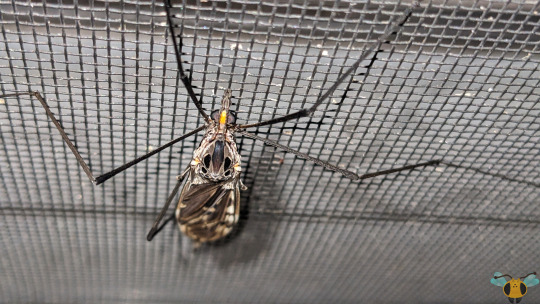
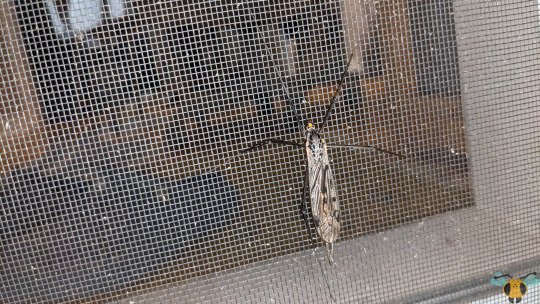







Giant Crane Fly - Tipula metacomet
In the world of Crane Flies, it is expected that many of them would be sizable, at least when considering the span or their legs. For today's specimen however, she has a trifecta of a long body, long wings and a long reach with her legs! This individual is so large (overall), that she would comfortably fit in my palm for observation. She's so grand in fact, that when I found her, I nearly convinced myself that this insect was a Hangingfly (a type of Scorpionfly). While Crane Flies and Hangingflies can appear similar due to their size and spindly legs, Crane Flies possess only one pair of wings (with balancing halteres in place of a second pair) and their legs are also designed to detach when necessary. Hangingfly legs appear more sturdy and seem better designed to wrap around an object (to hang off of it) rather than perch or grasp like a Fly would, just like this individual is doing along the screen door and its frame. Another possible conclusion is a scary one, as Crane Flies resemble large Mosquitoes! And if a Mosquito would be this large, imagine how much blood she would need for her eggs! As for proper identification of this palm-sized, spindly Crane Fly, the first thing to consider is the size. The next point to examine is the thorax and confirm the presence of black markings. Confirmed, they're there! Following that, the identification markers for this branch of Crane Flies become more complicated (especially the patterned wings)
A closer look of the insect is needed, otherwise this insect could be mistaken for a relative specie, such as another Giant Crane Fly like T. abdominals. Still a giant, but the wrong giant, and there are only 2 in North America. I nearly labelled this find as the latter specie, but comparing the legs of both Flies held the key! The latter specie has pale markings just before and after the tibia joint on each of its six legs! T. metacomet meanwhile has uniformly colored dark legs, and also has a solid color on the first segment of its abdomen. A glimpse of it can be seen in the small gap above where the folded wings rest. While the brownish color may seem somewhat drab, a bright yellow decorates the middle section of the abdomen. You can see a little of that color through the wings, but you'll be able to see the color in full when this insect is in flight, trying to dash towards the light on the other side of the screen door. You may have some luck drawing them to lights during their nocturnal flights. They can have multiple generations over a year, so the timeframe to find them is wide, but remember not to intimidated by their size when they swoop in. Be startled maybe, but never intimidated. Finally, as you observe, take note of the abdomen's tip. If you see a spiked end - like today's find - you have a female specimen. Males have a rear appendage akin to a tri-clasper, and they also tend to be smaller than the females.
Pictures were taken on September 16, 2024 with a Google Pixel 4. Seeing this large, beautifully-winged specimen so close to autumn has gotten me nostalgic suddenly for Spring Fishflies, another insect (of an entirely different insect order) that seems intimidating at first, but is actually harmless.
#jonny’s insect catalogue#ontario insect#fly#giant crane fly#tipula metacomet#crane fly#large crane fly#diptera#insect#toronto#september2024#2024#entomology#nature#invertebrates#arthropods#photography#animals
21 notes
·
View notes
Note
Are house centipedes the only ones among arthropods to have prehensile, tubular appendages analogous to hydrostatic tentacles?
house centipedes' hypersegmented legs are fairly unique, but some harvestmen, hangingflies, and crane flies have similar jointed prehensile limbs
71 notes
·
View notes
Note
trick or treat :3
You receive one (1) hangingfly, being badass as usual

25 notes
·
View notes
Text
don't fucking challenge me i know every beast
NON-BEASTLY BEASTS:
Non-ParaHoxozoa:
Calcarea (Calcareous Sponges)
Hexacinellida (Glass Sponges)
Demospongiae (Demosponges)
Tentaculata (Tentacled Ctenophores)
Beroida (Non-Tentacled Ctenophores)
ParaHoxozoa, Non-Nephrozoa:
Placozoa
Anthozoa (Corals, Sea Pens, and Tube-Dwelling Anenomes)
Medusozoa (Jellyfish and Hydrozoans)
Myxozoa
Xenacoelomorpha
MINIBEASTS:
Spiralia, Non-Lophotrochozoa:
Gnathifera (Rotifers and Jaw Worms)
Mesozoa
Rouphozoa (Flatworms and Gastrotrichs)
Lophotrochozoa, Non-Mollusca:
Cycliophora
Annelida (Segmented Worms)
Nemertea (Ribbon Worms)
Bryozoa
Entoprocta
Phorodina (Horseshoe Worms)
Brachiopoda
Mollusca:
Solenogastres
Caudofoveata
Polyplacophora (Chitons)
Bivalvia (Clams, Scallops, Mussels, Oysters, Cockles, and others)
Monoplacophora
Scaphopoda (Tusk Shells)
Gastropoda (Snails, Slugs, Sea Snails, Sea Slugs, and others)
Cephalopoda (Nautiloids, Cuttlefish, Squid, and Octopi)
Ecdysozoa, Non-Arthropoda:
Loricifera
Priapulida (Penis Worms [sic])
Kinorhyncha (Mud Dragons)
Nematoda (Roundworms)
Nematomorpha (Horsehair Worms)
Tardigrada (Tardigrades)
Onchyophora (Velvet Worms)
Arthropoda, Non-Mandibulata:
Pycnogonida (Sea Spiders)
Xiphosura (Horseshoe Crabs)
Acariformes (Cheese Mites, Scabies Mites, Eyelash Mites, House Mites, and others)
Opiliones (Harvestmen)
Ricinulei (Hooded Tickspiders)
Solifugae (Camel Spiders)
Parisitiformes (Ticks, Varroa Mites, and others)
Pseudoscorpiones (Pseudoscorpions)
Scorpiones (Scorpions)
Araneae (Spiders)
Amblypigi (Whip Spiders)
Urgopygi (Whip Scorpions)
Mandibulata, Non-Insecta:
Chilopoda (Centipedes)
Symphyla (Pseudocentipedes)
Pauropoda
Diplopoda (Millipedes)
Ostracoda (Seed Shrimp)
Mystacocarida
Branchiura (Fish Lice)
Pentastomida (Tongue Worms)
Copepoda (Copepods)
Tantulocarida
Thecostraca (Barnacles and others)
Malacostraca (Crabs, Lobsters, Shrimp, Isopods, Amphipods, and others)
Cephalocarida (Horseshoe Shrimp)
Branchiopoda (Fairy Shrimp, Tadpole Shrimp, Water Fleas, and others)
Remipedia
Collembola (Springtails)
Protura
Diplura (Two-Pronged Bristletails)
Insecta, Non-Neoptera:
Archaeognatha (Jumping Bristletails)
Zygentoma (Silverfish, Firebrats, and others)
Odonatoptera (Dragonflies and Damselflies)
Ephemeroptera (Mayflies)
Neoptera, Non-Holometabola:
Zoraptera (Angel Insects)
Dermaptera (Earwigs)
Plecoptera (Stoneflies)
Orthoptera (Grasshoppers, Crickets, and others)
Mantodea (Mantises)
Blattodea (Cockroaches and Termites)
Notoptera (Ice Crawlers and Rock Crawlers)
Phasmatodea (Stick Insects and Leaf Insects)
Embioptera (Webspinners)
Psocodea (Lice)
Hemiptera (Shield Bugs, Aphids, Scale Insects, Cicadas, Planthoppers, Assassin Bugs, Water Boatmen, Pond Skaters, and others)
Thysanoptera (Thrips)
Holometabola
Hymenoptera (Sawflies, Bees, Wasps, and Ants)
Strepsiptera
Coleoptera (Beetles)
Raphidioptera (Snakeflies)
Neuroptera (Lacewings, Antlions, and others)
Megaloptera (Dobsonflies and others)
Lepidoptera (Butterflies and Moths)
Trichoptera (Caddisflies)
Diptera (Flies, Mosquitoes, Gnats, Midges, Hoverflies, and others)
Mecopteroidea (Scorpionflies, Hangingflies, and Fleas)
SLIGHTLY MORE BEASTLY BEASTS:
Ambulacraria:
Echinodermata (Starfish, Sea Urchins, Brittle Stars, Feather Stars, and others)
Hemichordata (Acorn Worms and others)
Chordata (Non-Vertebrata):
Leptocardii (Lancelets)
Tunicata (Sea Squirts, Salps, Pyrosomes, and others)
Vertebrata (Non-Eutelostomi):
Myxini (Hagfish)
Hyperoartia (Lampreys)
Elasmobranchii (Sharks, Rays, and Skates)
Holocephali (Chimaeras)
Actinopterygii (Non-Acanthomorpha):
Cladistia (Bichirs and Reedfish)
Acnipenseriformes (Paddlefish and Sturgeons)
Halecomorphi (Bowfins)
Ginglymodi (Gars)
Elopocephalai (Eels, Ladyfish, Halosaurs, and others)
Osteoglossocephala (Arapaima, Goldeye, and others)
Clupei (Herrings and Anchovies)
Apelocephali (Slickheads and others)
Anotophysa (Milkfish, Beaked Salmon, and others)
Cypriniformes (Carp, Goldfish, Loaches, Minnows, and others)
Characiformes (Characins, Pacu, Pirahnas, Tetras, and others)
Gymnotiformes (Knifefish and Electric Eels)
Siluriformes (Catfish)
Lepidogalaxii (Salamanderfish)
Protacanthopterygii (Salmon, Pike, Trout, Barreleye, and others)
Stomiati (Smelts, Marine Hatchetfish, and others)
Ateleopodia (Jellynose Fish)
Aulopa (Bombay Duck and Lancetfish)
Myctophata (Lanternfish)
Acanthomorpha:
Lampridacea (Oarfish, Opah and others)
Paracanthomorphacea (Cods, Dories, Cavefish, and others)
Polymixiacea (Beardfish)
Berycimorphaceae (Fangtooths, Pineconefishes, and others)
Holocentrimorphaceae (Soldierfish)
Ophidiiformes (Pearlfish)
Batrachoidimophara (Toadfish)
Gobiomorpharia (Seahorses, Pipefish, Tunas, Flying Gurnards, and others)
Anabantaria (Gouramis, Swamp Eels, and others)
Carangaria (Swordfish, Flatfish, Remoras, and others)
Ovalentaria (Blennies, Cichlids, Flying Fish, Mullets, and others)
Eupercaria (Anglerfish, Pufferfish, Wrasses, Sunfish, Sticklebacks, Lumpsuckers, Lionfish, Angelfish, Perches, Archerfish, Triggerfish, Bass, and others)
Sarcopterygii:
Actinistia (Coelocanths)
Dipnoi (Lungfish)
BEASTS PROPER:
Lissamphibia
Salientia (Frogs and Toads)
Caudata (Salamanders and Newts)
Gymnophiona (Caecilians)
Reptilia (Non-Aves)
Rhynchocephalia (Tuatara)
Dibamidae (Blind Skinks)
Gekkota (Geckos and Flap-Footed Lizards)
Scinciformata (Skinks and others)
Laterata (Tegus and Worm Lizards)
Anguimorpha (Slow Worms, Monitors, Gila Monster, and others)
Iguania (Anoles, Iguanas, Chameleons, and others)
Serpentes (Snakes)
Testudines (Turtles and Tortoises)
Crocodilia (Crocodiles, Gharials, Alligators, and Caiman)
Aves (Non-Passeriformes):
Palaeognathae (Ostriches, Kiwis, and others)
Galloanserae (Chickens, Ducks, and others)
Mirandornithes (Flamingos and Grebes)
Columbimorphae (Doves and others)
Otidimorphae (Cuckoos, Turacos, and Bustards)
Gruimorphae (Gulls, Cranes, Auks, and others)
Ophistocomidae (Hoatzins)
Strisores (Hummingbirds, Nightjars, Potoos, and others)
Phaethoquornithes (Boobies, Loons, Ibises, Penguins, Albatrosses, Tropicbirds, and others)
Acciptirimorphae (Vultures, Hawks, Eagles, and others)
Strigiformes (Owls)
Coraciimorphae (Kingfishers, Woodpeckers, Quetzals, and others)
Cariamiformes (Seriemas)
Falconiformes (Falcons)
Psittaciformes (Parrots)
Passeriformes:
Acanthisitti (New Zealand Wrens)
Tyranni (Overnbirds, Spadebills, Gnateaters, and others)
Menurida (Lyrebirds and others)
Climacterida (Bowerbirds and others)
Meliphagida (Honeyeaters, Bristlebirds, and others)
Orthonychida (Logrunners and others)
Corvides (Crows, Jays, Boatbills, Shriketits, Sittellas, Birds-Of-Paradise and others)
Passerides (Satinbirds, Sparrows, Larks, Tits, Oxpeckers, Thrushes, Wrens, Finches, Tanagers, Nuthatchers, and others)
Mammalia (Non-Laurasiatheria):
Monotremata (Platypus and Echidnas)
Marsupialia (Kangaroos, Opossums, Wombats, and others)
Xenarthra (Anteaters, Sloths, and others)
Athrotheria (Elephants, Manatees, Aardvarks, and others)
Lagomorpha (Rabbits, Hares and others)
Rodentia (Mice, Rats, Cavies, Beavers, Squirrels, and others)
Scandentia (Treeshrews)
Dermoptera (Colugos)
Primates (Lemurs, Marmosets, Baboons, Gibbons, Chimpanzees, and others)
Lauasiatheria (Non-Carnivora):
Eulipotyphla (Shrews, Moles, Hedgehogs, and others)
Chiroptera (Bats)
Artiodactyla (Girrafes, Deer, Whales, Pigs, Camels, and others)
Perissodactyla (Horses, Tapir, and Rhinoceros)
Pholidota (Pangolins)
Carnivora:
Viverroidea (Hyenas, Mongooses, Civets, and others)
Feloidea (Lions, Tigers, Caracals, Wildcats, Leopards, and others)
Nandiniidae (African Palm Civet)
Caninae (Wolves, Foxes, and others)
Ursidae (Bears)
Musteloidea (Skunks, Weasels, Otters, Raccoons, and others)
Pinnipedia (Seals, Sea Lions, and Walruses)
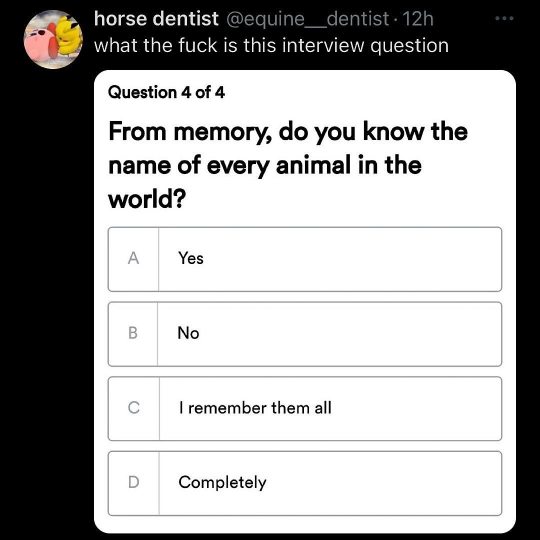
Interview questions for gym leaders
4K notes
·
View notes
Photo

Name: Jurassic Hylobittacus Scientific Name: Jurahylobittacus astictus Date: Middle Jurassic (165mya) Size: The fore-wings are 12.6 millimeters (0.50 in) long and the hind-wings are 10.3 millimeters (0.41 in) long. Location: Northeastern China Additional Information: Is an extinct genus of Hangingfly.
#extinct animal of the day#extinct animal#extinct insect#hangingfly#prehistory#prehistoric#prehistoric insect#extinct hangingfly#jurassic insect#jurassic#china
0 notes
Photo


A male black-tipped hangingfly lets females know he has a “nuptial gift” (a dead bug) for them. If the gift is too small and the female takes less than 5 minutes to eat it, the female ends copulation and isn’t inseminated. If the gift takes around 20 minutes for her to eat, the male can successfully inseminate her.
Photos: 1. John Alcock, Animal Behaviour, 8th ed. 2. [x].
0 notes
Note
There's also the Hangingflies which look like crane flies but aren't even distracted, and they do eat mosquitoes! What if someone saw that happen and thought it was a crane fly and that's where the name came from

Is there a difference between crane flies and mosquito hawks or are they both just male mosquitoes
Crane flies are in a group all their own, related to mosquitoes but not the same thing. Mosquito hawk is just another common name for crane flies. Not actually sure why they're called that because they don't prey on mosquitoes. Adult crane flies eat nectar if they feed at all.
235 notes
·
View notes
Note
15 and 43 for the ask game
First of all, thank you for the ask!! I'm buzzing!!
15: "most underrated bug?"
I don't exactly know how underrated these guys are but I'm going to go with snow scorpion flies (of the family Boreidae), tbh order Mecoptera in general is pretty underrated and I too am just learning more about it. I like these guys, they are closely related to fleas, are super adapted to a very specific enviroment (the boundary layer between snow and atmosphere, and are active during winter and cold moths) being directly dependent on the Sun's radiation for heat, the surrounding environment doesn't factor in much (unless, as the wiki states, put them in your hand and they'll die from your own heat, they can gain it, but not loose it easily). They are living on the edge huh. PLUS, they eat moss which is always great for no other reason than moss is great, love to see the cool organism interact AND I'm generally a big fan of insects that can survive in the cold!
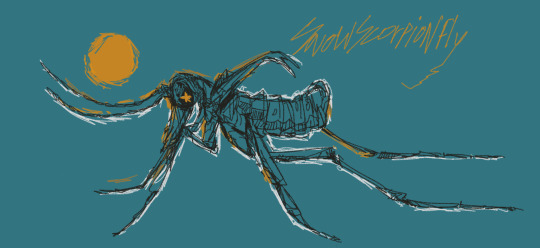
>long lengs so they don't touch the snow surface and loose the precious heat!
>Males have wings that aren't used for flying but for mating, females have... almost nothing for wings, vestigial as they get!

(Boreus westwoodi) I had to show how the wings worked, yeah.
Also since I'm on the topic of Mecoptera, I want to mention that female hangingflies (family Bittacidae) choose to mate or not to mate with a male depending on the quality of the prey the male brings her, isn't that a cool mating ritual! (so do scorpion flies, with their "nuptial gift" being saliva with yummy prey, the better the salive and more, the more time the mating lasts)
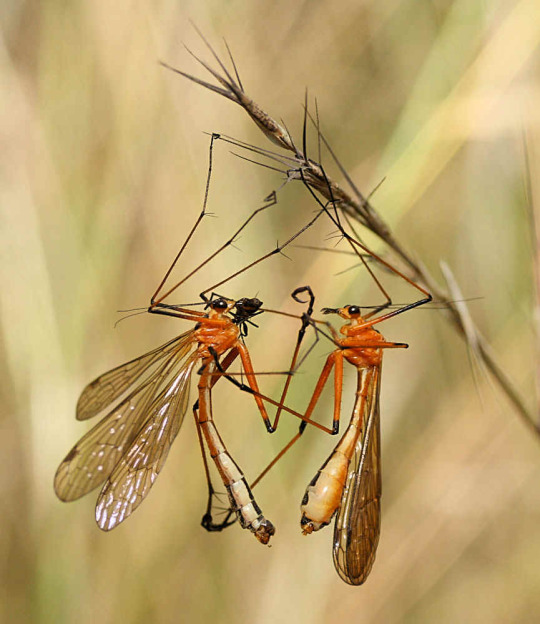
A reality TV show concept: "Will she take my prey? Will I take her [EGGS]?" (it's actually bareable because insects are cool)
43: which bugs do you think have the silliest faces?
Ok this one was super hard because there's wayyy too many and also I forgot 99% of all the insects I've ever know (cuz I do that when I'm asked lol), but here's a few funny photos from the interweb! Tbh, these lean towards cute more than silly (when in doubt tho, look at treehoppers)
Silly Number 1 (no order, except order Coleoptera!), Great-Diving Beetle! (Dytiscus marginalis)

"sir, that's a dog"
Silly Number 2, Some caddisfly larva (Stenopsyche sp.)
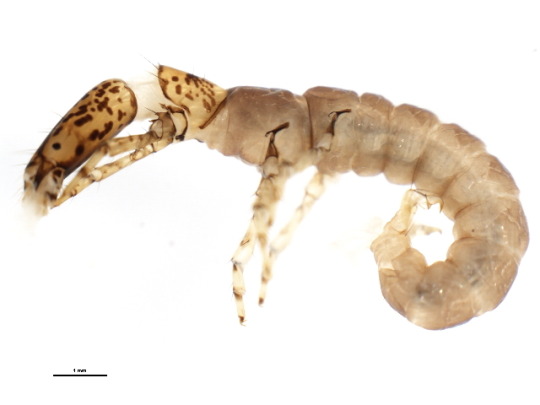
"sir, that's a ceetah"
Silly Number 3. Any Stinkbug ever (family Pentatomidae)

SIR THAT'S A-

Silly Number 4, this moss bug (Oiophysa distincta)
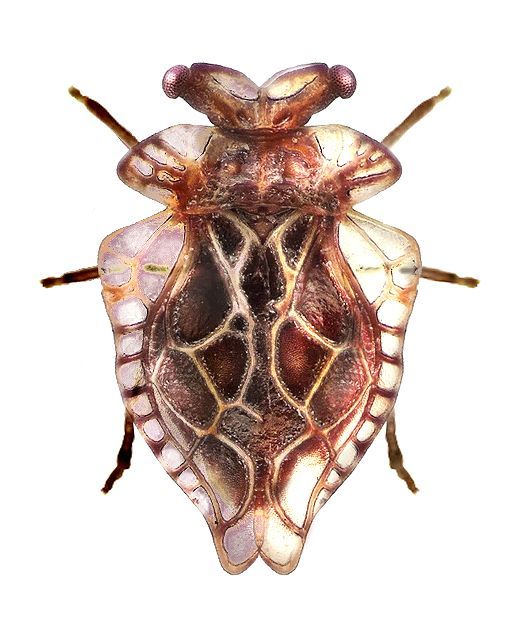
Couldn't find a photo of this lass facing the front, but I know, I know she's got potential.
OK, thank you for coming and thank you for the patience. That's all the bugs for now, but I'll be bugging ya'll soon with the other asks and the usual flood of typose and incoherence.
-signed a fishy chip
#you are totally allowed to hatecrime me for my writting style#Ty again for the ask#also dipterans rule just saying I could#<have written about them instead#have a nice day#also not double reading this cuz Im so hungry I need to eat and STOP TYPING FILLER#insects#mailbox✉️#ask#insect#bug#mecoptera#coleoptera#hemiptera#trichoptera#entomology#art#my art#insect art#doodle#man so many tags huh#fun facts#biology#cool facts#longpost#🦞chat#scorpionfly#nature#ok that is eeeeeenough of them
13 notes
·
View notes